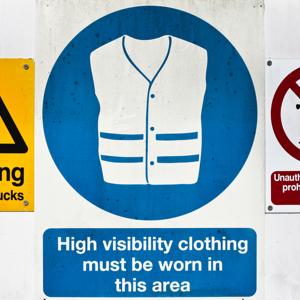
8 ways to improve workplace safety, reduce liability
April 5, 2019 11:38 am Leave your thoughts
Regardless of the company's industry or size, safety in the workplace should be top of mind for any business owner or executive. It's often said that a safe workplace is an efficient one, because even minor mishaps can lead to major disruptions.
With that in mind, and as a means of reducing liability for companies as a whole, it's important for decision-makers to continually strive for the best possible safety records. Doing so usually involves a careful review of company policies and practices to ensure there are proper rules in place and that they're being followed as much as is feasible.
"Companies must ensure there are proper safety rules in place."
The following are eight effective tips to improve your workplace's safety record from top to bottom:
1) Start with a walkthrough
Often, as companies grow and change, safety hazards emerge naturally and decision-makers may not understand their full extent, according to Cascade Business News. To get a better picture of how employees get their jobs done on a daily basis, and any concerns they may have, decision-makers should do at least one tour of the entire workplace. That includes talking with every person on the payroll and identifying potential risks they will need to mitigate in one way or another.
2) Put together rules
Once the information-gathering portion of the exercise is done, that data can be used to identify risks big and small and come up with business-wide best practices to stamp out those hazards wherever possible, Cascade Business News added. While there's no way to make a workplace 100 percent safe in any situation, there may be plenty of changes that can be implemented, and getting them in writing is a great first step.
3) Start training, and stick with it
Once there are actual, codified rules in place for employees and managers alike, all involved have to learn them well so that they can be followed to the letter, according to Insureon. However, while an initial training session is a must, so too is ongoing efforts to ensure everyone is re-learning basic skills or undergoing additional training whenever new issues arise. That's true for workers from the shop floor to the boardroom; no one should be exempt from these training exercises.
4) Invest in all the right equipment
When employees are properly trained on the best safety practices for their specific jobs, companies need to reinforce those efforts by making sure they have the latest and most effective safety equipment available, Insureon noted. A careful examination will help them determine exactly what gear they need, but there should be no corner-cutting here.
5) Be on the lookout
Workplace safety rules should never be written with a set-it-and-forget-it attitude, and the same is true of following the rules on an ongoing basis, according to Safety and Health Magazine. Decision-makers need to make sure that initial inspection is something they follow up on at least a few times a year, because issues arise over time and need to be dealt with swiftly.
"Workplace safety rules should never be written with a set-it-and-forget-it attitude."
6) Keep it clean
Similar to doing all possible to ensure rules are always followed, workplaces should also strive to make sure every area where employees go will be neat, tidy and devoid of hazards, Safety and Health advised. Any clutter, spills and the like that increase slip, trip, fall or skidding risk must be cleaned up as soon as they're spotted.
7) Put up reminders
As companies grow and more workers come aboard, their training should include the latest and best practices for working safely, but those with less experience don't always remember how to do everything exactly right, according to Atlantic Training. With that in mind, it's important to put up warning signs that advise employees when they are entering hard-hat areas, places where heavy machinery is in use, whether there are hazardous materials around and so on.
8) Encourage a culture of reporting
When employees feel empowered to report any potential problems they encounter in their daily work, they are more likely to help companies stay out in front of the hazards that could otherwise lead to major liability issues, Atlantic Training added. The same is true of workplace injuries or illnesses, which should always be reported right away. Sometimes, workers may fear that reporting these issues could be seen as a negative, but companies should never try to hide from their responsibilities here.
With even a few changes to make sure everyone in a workplace is able to do their jobs as safely as possible, businesses can significantly reduce their liability and help valued employees avoid illness and injury that can affect the entire office.
Categorised in: Asset & Liability Protection
This post was written by





